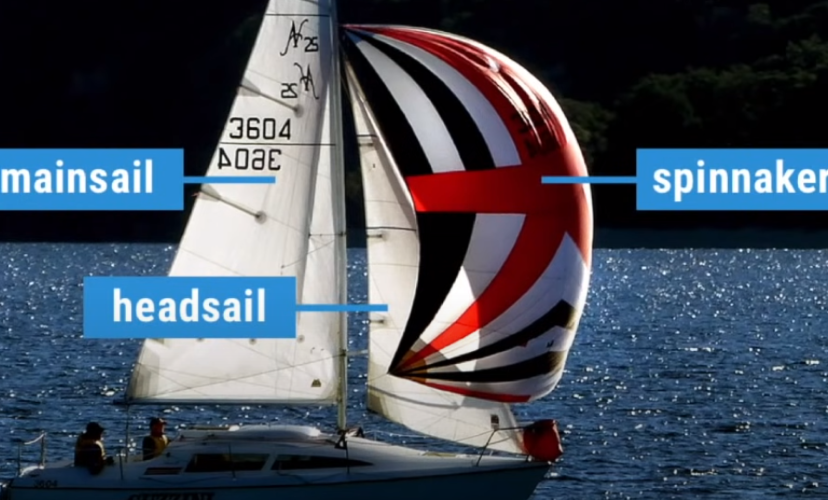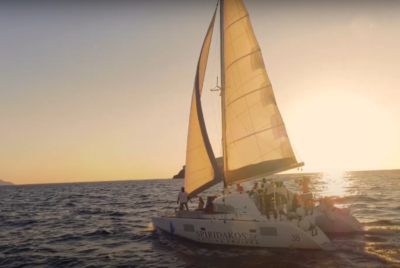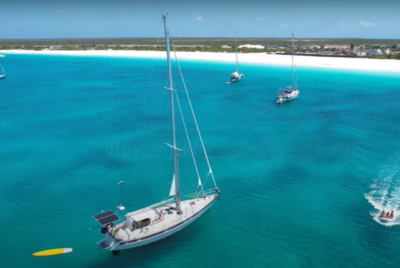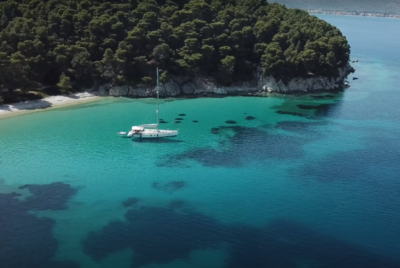Type of Sails: A Comprehensive Guide to Sails
As an avid sailing enthusiast and advisor, I am excited to share a complete guide to different types of sails for sailboats. Choosing the right sail is crucial for optimizing sailing performance and ensuring safety in various weather conditions. In this article, we will explore the main type of sails, their advantages, and when to use them effectively. So let’s set sail and delve into the world of sails!
The Main Types of Sails
Mainsail: The Backbone of Sailing
The mainsail, being the largest and most essential sail on a sailboat, plays a central role in driving the vessel forward. It is a fore-and-aft rigged sail attached to the mast and the boom. Mainsails are incredibly versatile and suitable for various wind conditions, making them the go-to sail for most situations. They are easy to steer, even in light winds, making them ideal for relaxed cruising.
Headsail/Jib: Your Go-To Sail for Safety
The headsail, also known as a jib, is a smaller sail located forward of the mast. Its primary purpose is to maintain stability and balance the boat in strong winds. When the wind picks up, the mainsail can become overpowering, and that’s when the headsail steps in to ensure safe and controlled sailing. It’s like having a safety net during rough weather conditions.
Genoa: Power and Versatility Combined
The genoa is a type of headsail that offers more sail area and power compared to a standard jib. It’s perfect for boosting speed and maneuverability, especially in light winds. Genoas are incredibly versatile, making them an excellent choice for sailors who want to get the most out of their sailboat in various conditions.
Sailing Ship Rigs: A Historical Perspective
In the era of the “golden age of sail,” different sail plans were used on sailing vessels to optimize their performance and accommodate smaller crews.
Fore and Aft Rig
The fore-and-aft rig, consisting of sails aligned along the length of the boat, includes popular designs like schooners and sloops. These rigs required smaller crews and were well-suited for coastal and fishing trades.
Square Rig
Square topsail schooners with athwart sails were also prevalent during that time. They were used for cargo ships and long voyages, but their complex rigging required larger crews to handle the sails effectively.
The Golden Age of Sail
This period marked the peak of sailing ship technology and saw remarkable advancements in shipbuilding and sail design. It’s a fascinating chapter in the history of sailing that continues to inspire sailors to this day.
Type of Sails Names: Decoding the Terminology
Mainsail and Foresail
The mainsail, as mentioned earlier, is the principal sail that catches the wind to move the boat forward. Foresail is a general term that includes various sails positioned near the bow of the sailboat, such as the jib and genoa.
Genoa and Jib
The genoa and jib are both types of foresails. The genoa is larger and overlaps the mainsail, providing additional power and efficiency. The jib, on the other hand, is smaller and is used when the wind is stronger.
Staysail and Spinnaker
Staysails are triangular sails set between masts and stays, used to improve stability and balance. Spinnakers are large, balloon-shaped sails used for downwind sailing, providing an extra boost of speed.
Choosing the Right Sail for Different Conditions
Sailing in Light Winds
In light winds, the mainsail is your best friend. It’s highly efficient and capable of catching even the slightest breeze, propelling the boat forward smoothly.
Sailing in Strong Winds
When the wind picks up, it’s time to rely on the headsail or jib. These sails provide a reduced surface area, preventing the boat from becoming overpowered and ensuring a controlled sail.
Navigating Challenging Weather
Different weather conditions call for different sails. Understanding the intricacies of each sail and when to use them will help you navigate through challenging weather with ease.
Type of Sails Materials: Quality Matters
Traditional Canvas Sails
Traditional canvas sails, made of materials like cotton or linen, were commonly used in the past. While they offer a classic charm, their performance and durability have limitations compared to modern sail materials.
Modern Sail Materials
Today, sail manufacturers utilize advanced materials like Dacron, Mylar, and Kevlar. These materials offer superior strength, low stretch, and better shape retention, contributing to improved sailing performance.
Pros and Cons of Each Material
Understanding the pros and cons of different sail materials will help you make an informed decision when purchasing or maintaining your sails.
Understanding Sail Shapes and Configurations
The Science of Sail Shape
Sail shape is crucial for maximizing performance and efficiency. Properly trimmed sails allow you to sail efficiently, whether you’re sailing upwind or downwind.
Balancing Performance and Stability
Finding the right balance between performance and stability is essential. Adjusting sail shape and trim can significantly impact your sailing experience.
Fine-Tuning Sail Trim
Sail trim is an art form. Mastering the art of fine-tuning sail trim will make you a more skilled sailor and enhance your overall sailing experience.
The Evolution of Sail Designs
From Classic to Cutting-Edge
Sail design has come a long way. From classic traditional sails to modern, innovative designs, sailmaking has witnessed significant evolution.
How Technology Impacted Sail Design
Technological advancements have revolutionized sailmaking, resulting in more efficient, aerodynamic, and performance-oriented sails.
Innovation in Sailmaking
Sailmakers are continually exploring new materials and construction techniques to create sails that are lighter, stronger, and more efficient than ever before.
Sailing Techniques: Getting the Most Out of Your Sails
Tacking and Gybing
Tacking and gybing are essential sailing maneuvers used to change the direction of the boat and optimize the use of wind.
Maximizing Speed
To get the most out of your sails, understanding how to trim them properly and sail at optimal angles is crucial for achieving higher speeds.
Safety Precautions
Sailing is exhilarating, but safety should always be a top priority. Understanding safety procedures and precautions will ensure a safe and enjoyable sailing experience.
Maintaining and Storing Sails
Sail Care and Maintenance
Proper care and maintenance are essential to prolong the life of your sails and keep them in top condition.
Storing Sails Properly
When not in use, storing sails correctly can prevent damage and maintain their performance over time.
Extending the Lifespan of Sails
With proper care and attention, you can extend the lifespan of your sails, making them a worthy investment.
Sustainable Sailing: Eco-Friendly Sail Materials
The Impact of Traditional Sails on the Environment
Traditional sail materials, while charming, may have a more significant environmental impact compared to modern, eco-friendly alternatives.
Eco-Friendly Sail Options
Eco-conscious sailors can explore sustainable sail materials that minimize environmental harm without compromising performance.
Embracing Sustainable Practices
As sailors, we have a responsibility to protect the oceans and environment. Embracing sustainable practices in sailing is essential for the well-being of our planet.
Conclusion
As we conclude this comprehensive guide to different type of sails, I hope you now have a deeper understanding of the critical role sails play in sailing. Choosing the right sail and mastering sail techniques will elevate your sailing experience to new heights. Remember, sailing is an ever-evolving journey of learning and adventure.
FAQs
Which sail is best for light winds?
The mainsail is the most suitable sail for light winds as it can efficiently catch even the slightest breeze and keep the boat moving smoothly.
What is the purpose of a genoa?
The genoa is a type of sails that provides additional power and versatility, making it an excellent choice for boosting speed and maneuverability in various wind conditions.
What sail material is most durable?
Modern sail materials like Dacron and Kevlar offer superior strength and durability compared to traditional canvas sails made of cotton or linen.
How do I maintain my sails?
Proper care and maintenance, including regular cleaning and inspection, will help prolong the life of your sails and ensure they perform optimally.
Are there eco-friendly sail options?
Yes, eco-conscious sailors can opt for sustainable sail materials that minimize environmental impact, contributing to a greener and more sustainable sailing experience.




